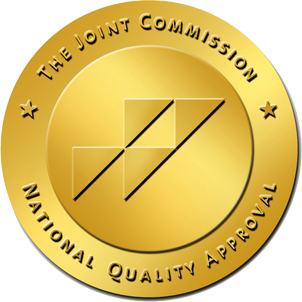
If you expect that a loved one is abusing methamphetamine, it can be difficult to verify. For example, most people won’t be truthful if you attempt to sit down and have a conversation. Instead, drug abusers lie, throw back accusations, and use deception, even to the point of deceiving themselves. Yet, some 2.5 million Americans use methamphetamine, and an estimated 1.6 million of those are addicted to the drug. With almost 1 in 100 Americans using meth, it’s not unlikely that your suspicions of drug abuse are founded on something – so you can look for symptoms and take steps to get your loved one help. Importantly, if your loved one is abusing drugs, it’s important to be gentle, non-judgmental, and caring. That starts with your investigation into whether they’re using or not.
Your loved one should always be treated as a person with an illness, not someone making bad decisions or someone deliberately doing the wrong thing.
The more you use judgment and anger, the more likely it is that you’ll have trouble getting them into treatment.
In most cases, you can start with three basic things. Looking for symptoms of your loved one being high, looking at long-term side-effects of meth, and looking for paraphernalia and other signs of drug abuse.
Symptoms of Being High
Methamphetamine is a stimulant which rapidly acts on the body, resulting in increases in energy, alertness, motivation, and mania. Normally, these symptoms last for about 12 hours or more, with a defined “manic” period followed by a crash. Initially, people act like they are suddenly excited and full of energy, are agitated, breathe more heavily, and may have dilated pupils. These symptoms can kick in within 15 minutes of taking a dose and can result in a period of being agitated and energetic that lasts up to 36 hours. Afterwards, people tend to crash, sleeping for tens of hours at a time and sometimes for a full 24-hour period.
That after-effect or “Crash” also often comes with cold and flu symptoms like redness around the eyes, runny nose, fatigue, and depression. They might be unable to sleep, but while being tired. And, that will happen cyclically, every time they use and crash.
Of course, people with manic disorders tend to have similar symptoms, minus the cold and flu symptoms. That’s also problematic considering people with bipolar disorders tend to struggle with substance abuse. So, it can be much harder to notice methamphetamine use in someone who already has manic episodes.
Get Your Questions Answered
Our expert & caring staff on site are available 24/7. Call us today.
Understand the Symptoms of Long-Term Meth Abuse
The longer your loved one uses methamphetamine, the more noticeable the side-effects will be. Methamphetamine has a significant effect on users, with an estimated 18% of all users and up to 70% of regular users suffering from psychotic episodes and psychosis. Unfortunately, longer-term symptoms can be difficult to notice, because they often happen gradually. People don’t go from one state to the next but instead gradually slide into being worse and worse. You might look up one day to realize that your loved one is doing really badly, even if you’ve been seeing them every day.
That’s a natural result of being around someone everyday and gradual change. You just get used to it. But, if you notice the following symptoms affecting your loved one, they are symptoms of meth use.

- They have difficulty feeling happy or showing happiness at things they used to like. They might just not be excited for anything or they might be “meh” at everything. This is known as emotional blunting and happens when serotonin and dopamine channels are overloaded and the brain stops or reduces producing both.
- They have out of character periods of depression, which might last for weeks at a time. That’s especially true if the first few days of this always come with cold and flu symptoms. However, this could also be a symptom of bipolar disorder or depression.
- They struggle to sleep or maintain a healthy sleeping schedule. For example, they might sleep for several days at a time and then not sleep for several days.
- They start to show physical symptoms of meth use such as tooth decay, muscle tics, or jumps.
- They start to be paranoid or irrational behavior and may think people are out to get them, may take hunches to extremes, and may jump at every shadow.
- They might start to be more manipulative, even showing completely different personality traits. For example, they might deliberately lash out and try to hurt you. They might also deliberately try to manipulate you to feel bad so you stop asking questions. They might guilt trip you, lash out, or use righteous anger to make you feel bad. And while those reactions and behaviors can be justifiable in some circumstances, in others, they are not. People who are abusing methamphetamine will likely to start to use them indiscriminately to get what they want.
- They lose a significant and worrying amount of weight, to the point where they look unhealthy. They might also lose hair and teeth if they lose enough weight. This can be difficult to tell, especially if they were overweight, but sudden and rapid weight loss without dramatically changing diet and exercise is unlikely without an illness or drug abuse.
- They show symptoms of psychosis like hallucinations, talking about things that aren’t there, having trouble telling what’s real or not, itching or scratching at things crawling on their skin, having irrational beliefs, etc.
- They show increases in aggression and irritability and may lash out at even small provocations.
- They have memory problems and might not be able to clearly put an event together, even if it was a day or two ago.
- They “tweak” or stay awake for extremely long periods, sometimes as long as 2 weeks, with agitated and jerky movement, extreme irrationality, and difficulty functioning.
Methamphetamine can be subtle in small doses. However, heavy abusers often change so drastically, physically and psychologically, that the people who love them barely recognize them. They can become aggressive, mean, paranoid, manipulative, and irritable. They might have memory problems, they might not show love or excitement for anything, and they might even look completely different. But, when that happens, your loved one is very obviously and very heavily addicted to meth.

Physical Signs
There are always going to be non-health and behavior related signs of drug use. Here, you can actively look for some of the following:
- Paraphernalia such as glass pipes
- Needles
- Ropes or hoses
- Unexplained blood
- They constantly run out of money or things happen that require money
- They manipulate you to get money
- Things go missing or are stollen
If you find drug use paraphernalia, it’s a pretty strong sign your loved one is using. That’s true even if they deny it or say that their friend was using and they did not.
Getting Help
Millions of Americans use stimulants like methamphetamine. Unfortunately, these drugs are never safe and run high risks of physical and psychological harm, with up to 70% of methamphetamine users experiencing significant psychosis. The sooner you quit, the less likely you are to have lifelong side effects and problems.
Unfortunately, it can be extremely difficult to talk someone into going to treatment and therapy. That can take time, building trust that you really want to help. And, it can mean convincing that person that life is better without meth. Good luck getting your loved one into treatment.
If you or your loved-one struggles from alcoholism or other substance abuse please contact us today and speak with one of our experienced and professional intake advisors about our detox, and residential treatment programs. 10 Acre Ranch also has specialty tracks like our pet friendly drug rehab and couples substance abuse treatment programs. We’re here to help you recover.






